We had six weeks to crisscross this diverse country. Romania has a lot to offer, from castles and churches to mountains and caves to the Black Sea and the Danube Delta. Here very different cultures met, not always peacefully, and these have left very diverse traces. Romania appears as the country of two speeds: while the cities seem modern, in the villages horse-drawn carts still roll through the streets and hay is laboriously gathered into (very pretty!) haystacks.
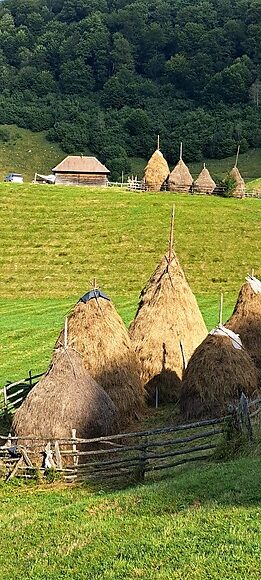
We spent most of our time in Transylvania, which is enclosed on three sides by the arc of the Carpathians and on the fourth by the Apuseni Mountains. A special feature are the many fortified churches built by the Saxons (settled by the Hungarian king to secure the border regions) in almost every settlement, each with its own character. The highlight for us is Viscri, a pretty village with a church surrounded by walls and white towers. Here we spend a night in a guesthouse in one of the old houses and sleep in an old Saxon bed box, with one bed on top and a second bed below that pulls out in a drawer. In Trappold we have the opportunity to explore also the attic of a fortified castle. Also very nice were Biertan and Prejmer.
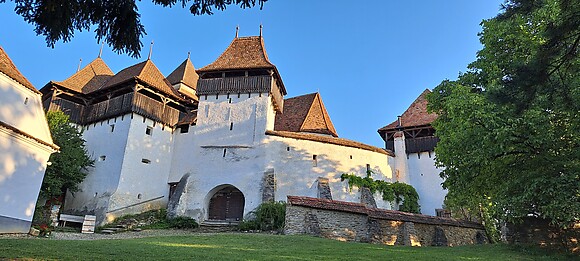
The most famous castle is of course Bran, often called Dracular Castle. An endless ant line of tourists squeezes through the rooms and the small courtyard. Much more impressive, however, is Hunedoara Castle.
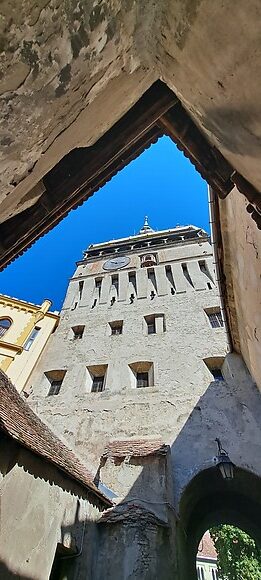
The most famous cities in Transylvania are Brasov, Sighișoara, and Sibiu. Sighișoara, with its many towers, is particularly picturesque, but it is also the most touristy. Sibiu, with its three large squares and good museums, pleases us the most.
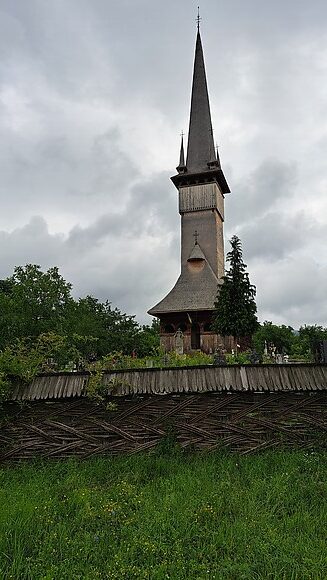
Completely different are the wooden churches further north in Maramureș, which remind me of Norwegian stave churches. I like best the churches in Șurdești and Plopiș, with especially high towers. We cross a pass to the other side of the Carpathians into Bukovina, where there are some Orthodox monasteries of the former principality of Moldova. We visit three of them, Moldovitei, Sucevita and Voronet. The churches are full of frescoes not only inside but also on the outer walls, and they are covered by curved roofs.
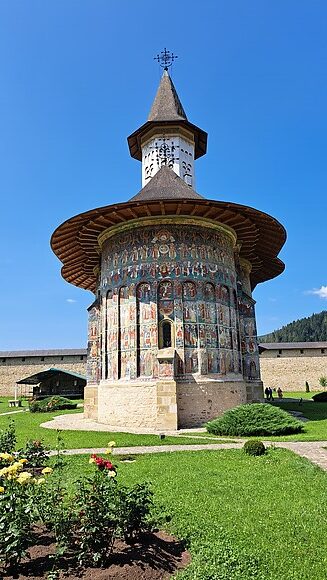
Crossing the Carpathians again, we drive through the Bicaz Gorge and walk around Lacul Roşu. This lake has been dammed by a landslide and tree stumps still rise above the water surface. However, there are many tourists here.
I had expected more from Lake St. Anna (a volcanic lake), the great pictures on the web are probably all taken with drones. We spent a rainy day in a spa in neighboring Baile Balvanyos.
Again over the Carpathians we visit the mud volcanoes of Berca (Vulcanii noroiosi). I have seen some mud volcanoes in Azerbaijan and Indonesia, but the Romanian ones are also very beautiful. From the campsite, we explore both Pâclele Mici (with many small cones) and Pâclele Mari (a very large flat with active small cone at the top).
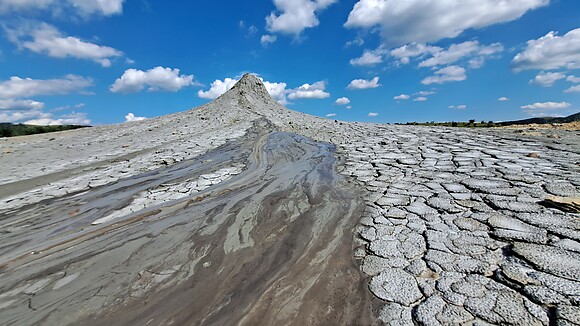
The next destination was the Danube Delta. From Murighiol (on the southern edge and accessible by car) we start at sunrise for a four-hour boat trip across the Danube arm, through narrow channels, across countless lakes and through their reed belts. The morning atmosphere is beautiful and there are lots of pelicans, kingfishers, herons and eagles. In the neighboring village of Mahmudia we take the ferry (3 times a week) down the Danube branch to Sfântu Gheorghe, which is close to the mouth and can only be reached by boat. Here the clocks are slower … A long beach is within walking distance and there is very good fish to eat.
In Bucharest, Ceaușescu’s palace is our first destination, which with its pageantry really takes the idea of communism to absurdity. The city, with its drastic breaks between socialist architecture and old buildings, is much more interesting than expected.
The winding Transfăgărășan Pass road, which leads from Wallachia back to Transylvania, is not skipped by any traveler. On the way, it is worth stopping in Curtea de Argeș with particularly beautiful Orthodox churches. While driving over the pass, we see two families of bears within a short time. The animals are so used to tourists that they beg at the road. From the top I hike to the highest mountain in Romania.
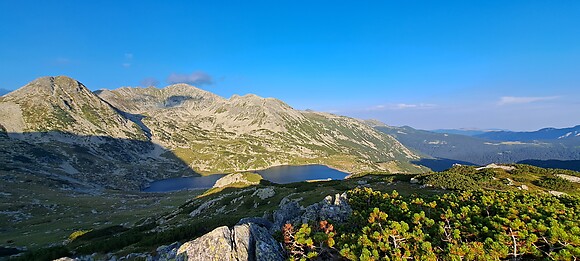
Another area with alpine character is further west: in Rezetat there are plenty of mountain lakes between rugged peaks. We bump by car over a long gravel road to the Pelegii hut and climb from here to Lake Bucura, where we pitch our tent. In the evening we make a round to the highest lake, Lacul Taul Portii, and the next morning to the highest peak of the area, Vârful Peleaga (2509 m).